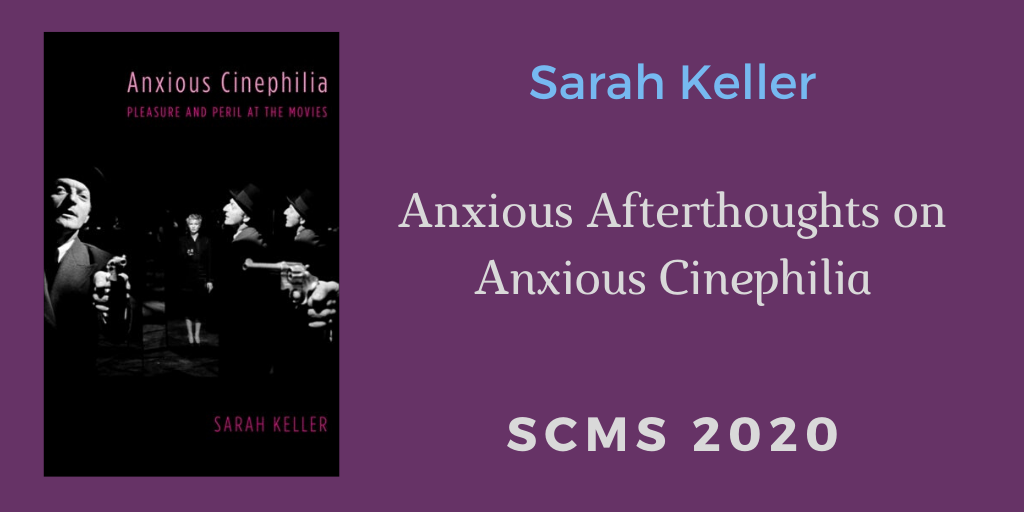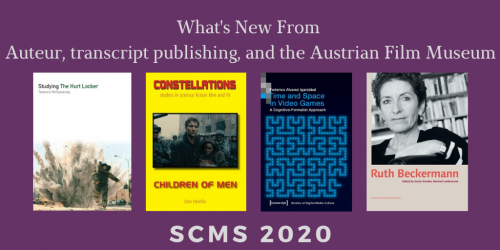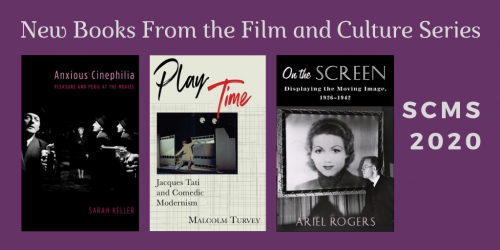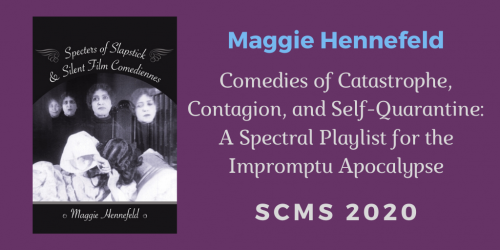Anxious Afterthoughts on Anxious Cinephilia
by Sarah Keller

“Anxious Cinephilia gives us the most far-reaching theorization of cinephilia yet. This exploration of desire and anxiety as twin impulses unearths novel connections across film cultures, affective states, and moments of technological change, from early cinema to cinematic spectacle in the digital era. Keller produces a fascinating remapping of the shifting relationship between the spectator and the beloved object and refashions cinephilia for our anxious times.”
~Belén Vidal, author of Heritage Film: Nation, Genre, and Representation
The following post is by Sarah Keller, author of the newly published Anxious Cinephilia: Pleasure and Peril at the Movies.
• • • • • •
It shouldn’t surprise me by now, but about every few months, something happens that makes me want to expand parts of my book Anxious Cinephilia, which I worked on (and tweaked accordingly) over the past five or so years. Now that it has been published, I have to content myself with thinking about how the more things change, the more—well, they make people anxious in new and old ways (which is also something that stays the same).
The current tragic dimension of the global pandemic is a more extreme example of a moment that prompts questions about the volatility of everything, including the cinema. For those who care how cinema weathers this time, questions might include: will watching movies in movie theaters go the way of the dodo? Has the current dependence on streaming formats changed the kinds of things people watch? Given how many ongoing film productions have been shut down, what will happen to international festivals, or to the type of content available to viewers at home or in theaters when/if they do (eventually?) reopen, or to the industry that depends on so many contract workers?
“I don’t know whether these scenes offer hope, exactly, but I have to say that in the past weeks, the movies in general have been a balm to me.”
Some of the movies discussed in the book, especially those of the post-millennial apocalyptic sort, seem keenly relevant now. In one, Take Shelter, a man who has visions of an oncoming storm that may or may not actually happen cautions his community that they are not at all ready for the disaster to come. Several of these films show eerily empty cityscapes of New York, San Francisco, Boston, and elsewhere as people evacuate, shelter in place, or die, echoing pictures I’ve been seeing across social media of the same cities and elsewhere: spaces devoid of people. These films often have at their center a sense of renewal even amid the aftermath of devastation (birdsong, trees and vines growing in deserted streets, the untouched splendor of Muir Woods). I don’t know whether these scenes offer hope, exactly, but I have to say that in the past weeks, the movies in general have been a balm to me. That goes for these films of disaster/renewal as well as for the many beautiful films I continue to try to teach imperfectly on an online platform, like Jane Campion’s An Angel at my Table (1990), which one student shared made her feel quieter inside.
So while anxiety is absolutely the feeling du jour, a love for movies also matters at such times; even a little goes a long way.








